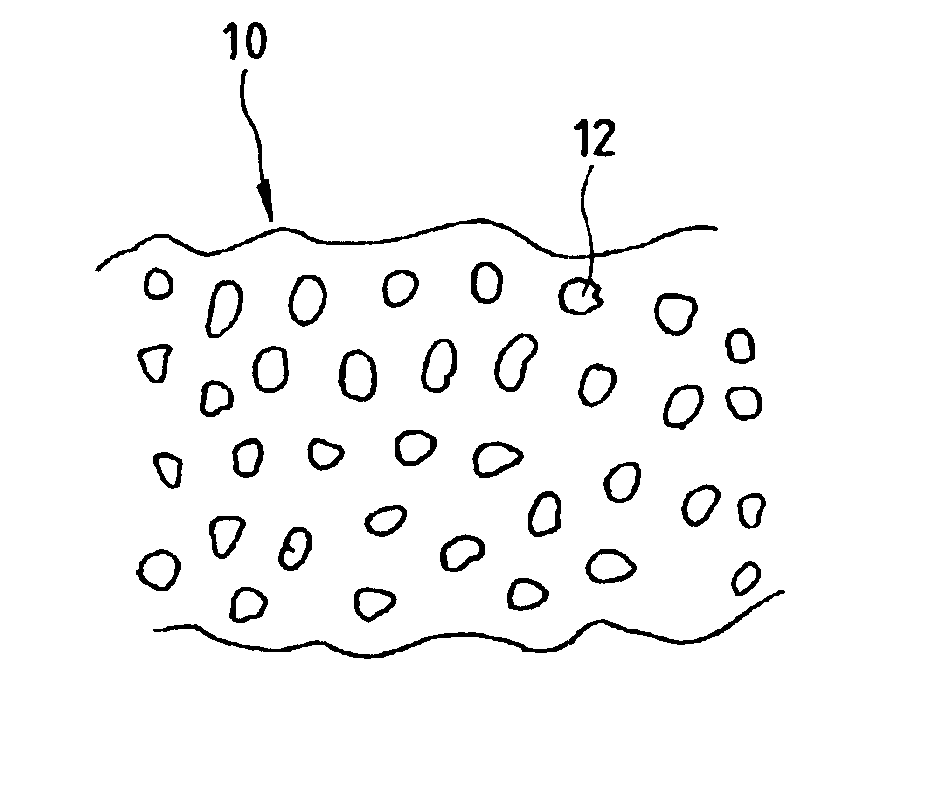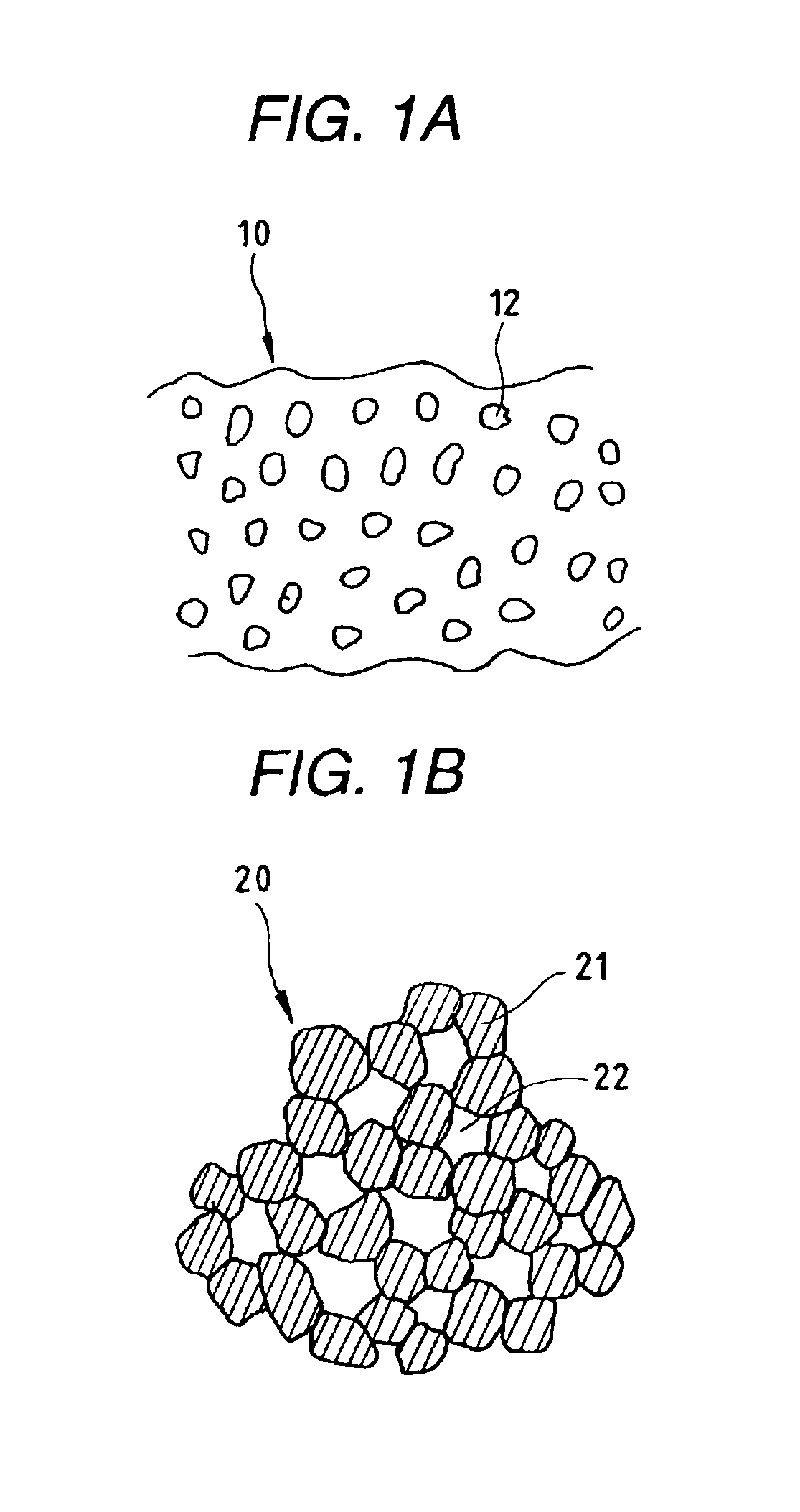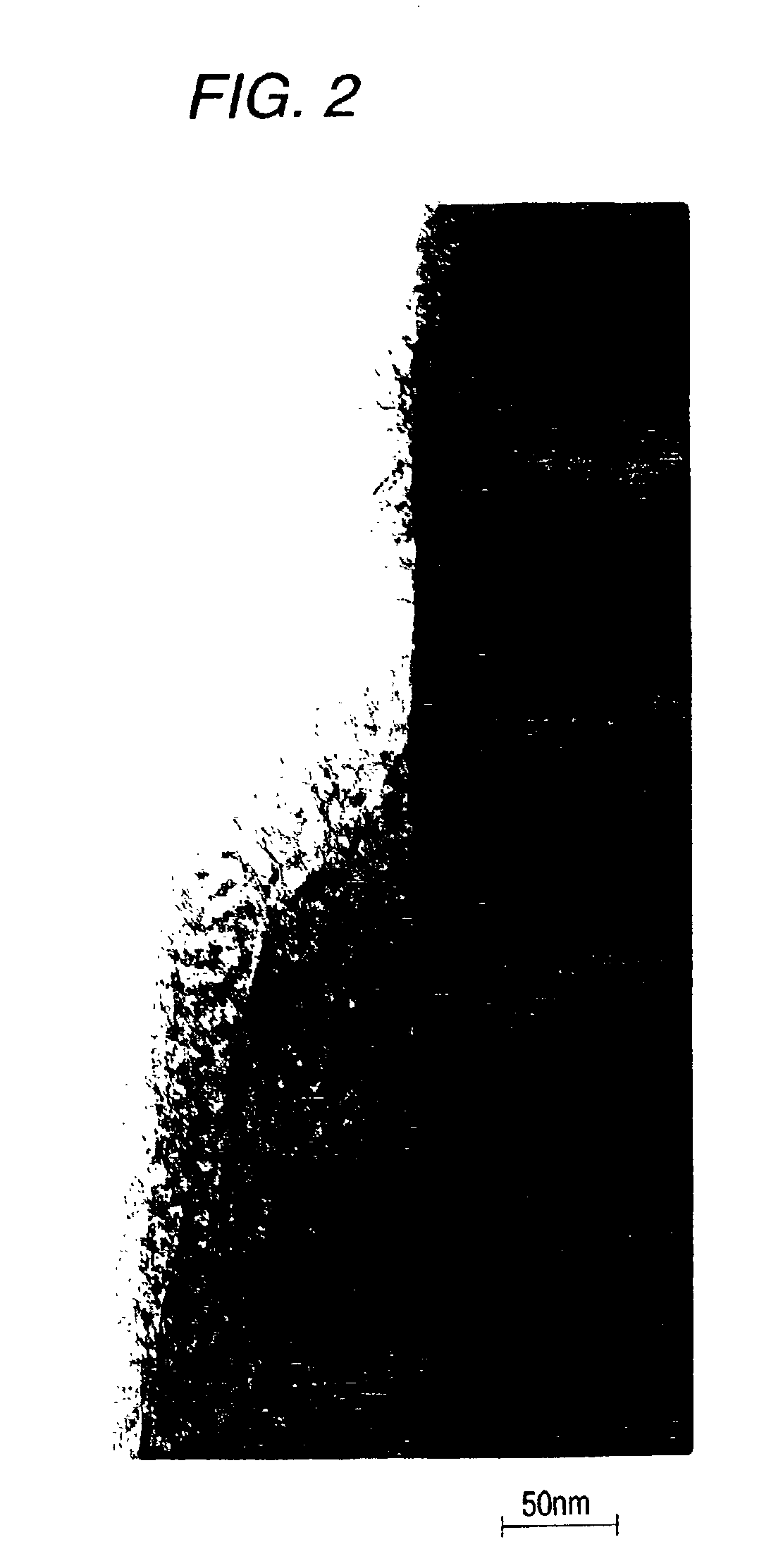Porous material process of producing the porous material, catalyst for purifying exhaust gas comprising the porous material, method of purifying exhaust gas
a porous material and process technology, applied in the direction of catalyst activation/preparation, metal/metal-oxide/metal-hydroxide catalysts, arsenic compounds, etc., can solve the problems of difficult control of product consistency conditions, inability to uniformly disperse, and time-consuming process, so as to improve heat resistance or modification characteristics, improve the effect of heat resistan
- Summary
- Abstract
- Description
- Claims
- Application Information
AI Technical Summary
Benefits of technology
Problems solved by technology
Method used
Image
Examples
example 1
Preparation of First Porous Material:
[0186]In 1 liter of ion-exchange water was dissolved 0.21 mol of aluminum sulfate to prepare a starting aqueous solution. The aqueous solution was adjusted to pH 3.8 by addition of 48 g of 25% ammonia solution to form a precipitate. The aqueous solution containing a precipitate was aged at 120° C. (2 atm.) for 2 hours, washed, dried, and calcined at 800° C. in the atmosphere for 5 hours. The resulting alumina porous material (hereinafter “the 800° C. calcined product”) was found amorphous.
[0187]The pore size distribution of the 800° C. calcined product was measured with PMI Porosimeter supplied by PMI. From the prepared distribution curve were obtained the mean pore diameter (the peak diameter) and the volume of the pores within ±5 nm or ±3 nm at the mean pore diameter of the total meso-pore volume (the volume of pores in a region of 2 to 100 nm). The results obtained are shown in Table 1.
[0188]FIG. 2 is a TEM image of the 800° C. calcined produc...
example 2
[0189]Examples 2-1 to 2-18 demonstrate alumina porous materials among the second porous materials.
example 2-1
[0190]Alumina porous materials were prepared in the same manner as in Example 1, except that the calcining temperature was changed from 800° C. to 900° C. or 1000° C. Both porous materials obtained (900° C. calcined product and 1000° C. calcined product) were found to be γ-alumina.
[0191]The mean pore diameter and the volume of the pores within ±5 nm or ±3 nm at the mean pore diameter of the total meso-pore volume were determined in the same manner as in Example 1. The results obtained are shown in Table 1. A TEM image was taken of the resulting alumina porous materials, and the aspect ratio of arbitrarily selected 50 particles constituting each porous material was measured. Forty-eight particles out of fifty (96%) had an aspect ratio of 3 or less. It was also ascertained by the TEM image observation that the porous materials were sparse aggregates of particles having an aspect ratio of 3 or less with meso-pores among the particles.
PUM
| Property | Measurement | Unit |
|---|---|---|
| pore diameter | aaaaa | aaaaa |
| pore diameter | aaaaa | aaaaa |
| diameter | aaaaa | aaaaa |
Abstract
Description
Claims
Application Information
 Login to View More
Login to View More - R&D
- Intellectual Property
- Life Sciences
- Materials
- Tech Scout
- Unparalleled Data Quality
- Higher Quality Content
- 60% Fewer Hallucinations
Browse by: Latest US Patents, China's latest patents, Technical Efficacy Thesaurus, Application Domain, Technology Topic, Popular Technical Reports.
© 2025 PatSnap. All rights reserved.Legal|Privacy policy|Modern Slavery Act Transparency Statement|Sitemap|About US| Contact US: help@patsnap.com



